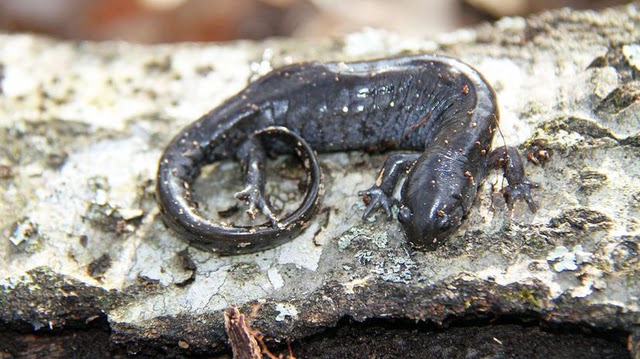Quck answer
Salamanders, a type of amphibian, are known to travel long distances to find a mate. Some species can travel up to 20 miles to reach their breeding grounds. This behavior is driven by their strong urge to reproduce, and it helps to ensure genetic diversity within the population. Salamanders are also able to navigate back to their original habitat using their sense of smell and memory. However, habitat loss and fragmentation due to human activities is threatening the ability of salamanders to travel and mate, which could have negative consequences for their survival. Conservation efforts are needed to protect their habitats and maintain healthy populations.
Wild Animals

Just like humans, some animals are also willing to travel long distances to find a mate. A new study published in the journal Functional Ecology has revealed that smallmouth mole salamanders (Ambystoma texanum) travel an average of six miles (10 km) and up to nine miles (15 km) to reach new breeding grounds. These salamanders will cross all kinds of terrain to find a mate that is not related to them. This is impressive considering the largest size these salamanders grow to is around 7 inches (18 centimeters).
Most salamanders spend their lives hiding under logs in the forest. However, when it is time to mate, they come out prepared to travel tirelessly for miles to find a mate in a foreign land. The researchers found that sexually reproducing salamanders had more stamina for walking on a treadmill than their all-female unisexual counterparts. The sexually reproducing species could walk up to four times farther than the all-female species without getting tired.
The researchers discovered that the sexually reproducing salamanders were embarking on these long journeys by taking genetic material from 445 salamanders from wetlands all over Ohio and cross-referencing the data with information about who was most closely related to whom.
“Maybe the reason why sexual salamanders travel so far is that they have to: on a large landscape with few places to breed, the animals that can cross that distance are the ones that survive and reproduce,” said study author Robert Denton, a Ph.D. student in the Department of Evolution, Ecology and Organismal Biology at Ohio State. “Perhaps the more interesting question is why the all-female salamanders don’t go very far, and we think that has to do with the physiological costs of not having sex. Essentially, not mixing up your genomic material often enough likely causes some problems for genes that you need to make energy.”
That’s Fascinating
Despite living primarily in water, salamanders have long been connected to fire in a symbolic sense. Leonardo Da Vinci once stated that the salamander “does not possess any organs for digestion, and it sustains itself solely on fire, which it uses to regenerate its scaly skin. The salamander, which rejuvenates its scaly skin in the flames, represents virtue.”
FAQ
1. What are salamanders?
Salamanders are amphibians that belong to the order Urodela. They are known for their long, slender bodies, short legs, and long tails. Salamanders can be found in a variety of habitats, including forests, lakes, and rivers. Most species of salamanders are nocturnal and are active at night.
2. Why do some salamanders travel long distances to mate?
Some salamanders travel long distances to mate because they need to find a suitable breeding site. For example, some species of salamanders lay their eggs in streams or ponds, which may be located far from their normal habitat. In order to reach these breeding sites, salamanders may have to travel for miles, crossing roads and other obstacles along the way.
3. What are the dangers of long-distance travel for salamanders?
Long-distance travel can be dangerous for salamanders because they are small and vulnerable to predators. Salamanders that must cross roads to reach their breeding sites are at risk of being run over by cars. In addition, salamanders that are forced to travel long distances may become exhausted and may not have enough energy to mate successfully.
4. How do salamanders navigate during their travels?
Salamanders use a variety of cues to navigate during their travels. Some species are able to detect the Earth’s magnetic field and use this information to orient themselves. Others may rely on their sense of smell to find their way to a breeding site. Still others may use visual landmarks or other environmental cues to navigate.
5. What is the significance of long-distance travel for salamanders?
Long-distance travel is significant for salamanders because it allows them to mate and reproduce successfully. By traveling long distances to reach breeding sites, salamanders are able to find partners and ensure genetic diversity within their populations. This is important for the survival of the species.
6. What can be done to protect salamanders during their travels?
There are several things that can be done to protect salamanders during their travels. One approach is to build wildlife crossings, such as tunnels or bridges, that allow salamanders to safely cross roads. Another approach is to establish protected breeding sites that are located closer to the salamanders’ normal habitat. Additionally, reducing the amount of habitat fragmentation can help to ensure that salamanders have access to suitable breeding sites without having to travel long distances.





Leave a Reply